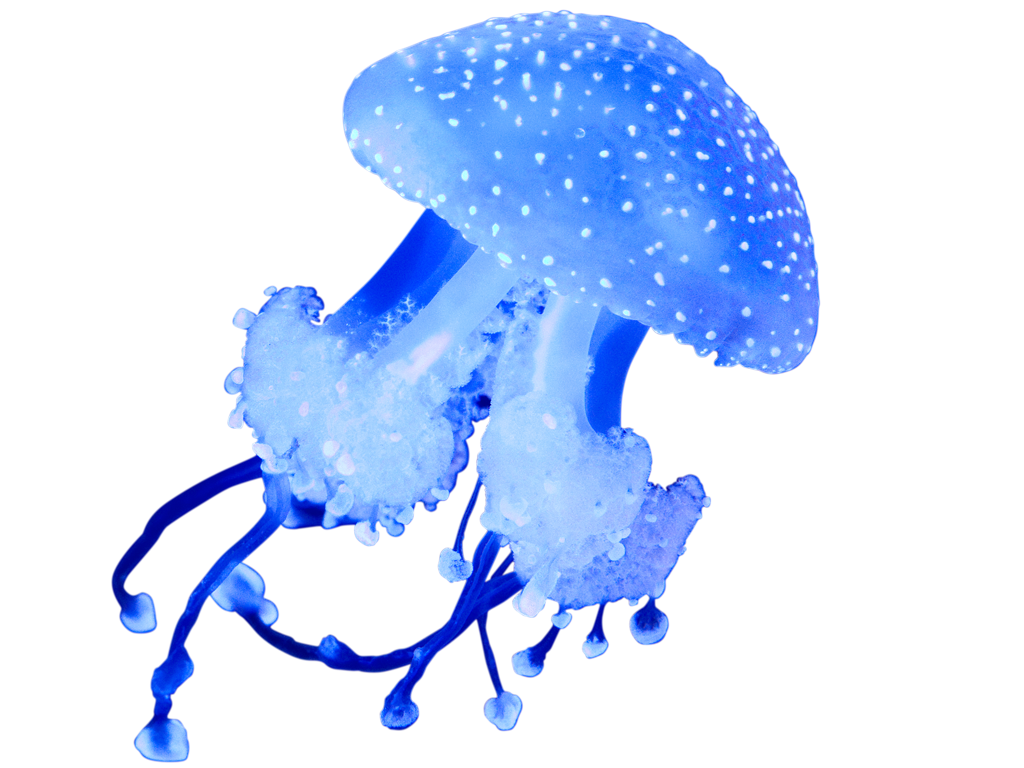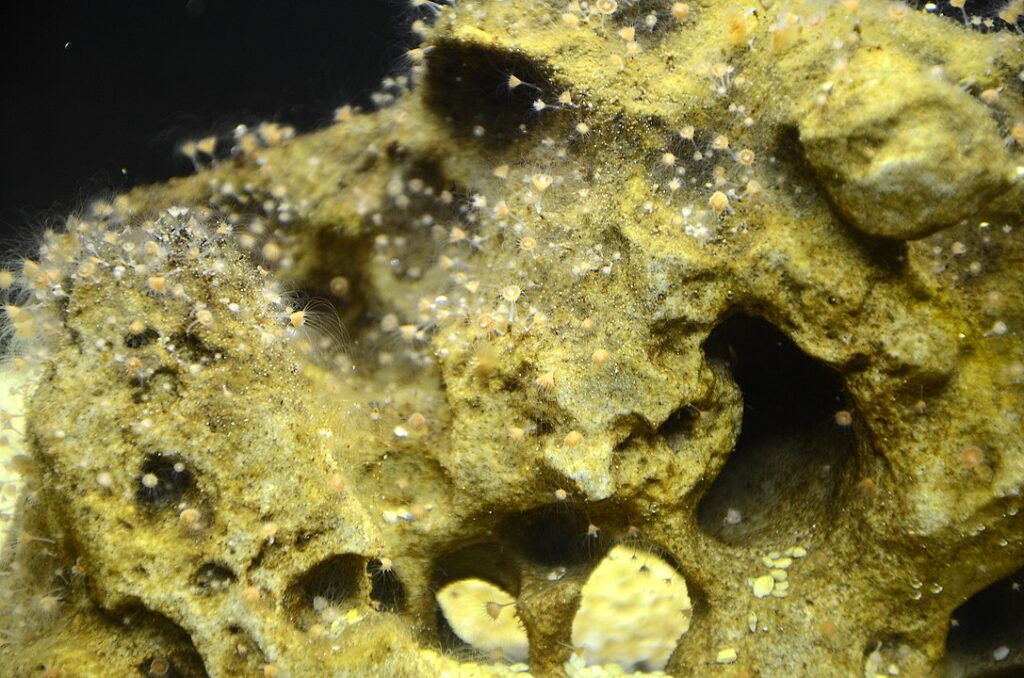Australian spotted jellyfish
Phyllorhiza punctata

Slightly venomous
Jellyfish are so-called cnidarians, and are related to, for example, corals and anemones. All jellyfish have ”nettle cells” known as cnidocytes, and the Australian spotted jellyfish has long nettle cells with a weak venom. The venom is not dangerous to humans.
The Australian spotted jellyfish swims freely in the sea in large shoals, and prefers high salinity. The species can swim long distances, and a shoal can feed on large quantities of zooplankton in a limited area of the sea until it is entirely cleansed. When the jellyfish occasionally reach high numbers, other species may temporarily run out of food.

The jellyfish’s stinging cells are located in its tentacles.
Photo: Johannes-Maximilian-CC-BY-SA
Reproduces in two different ways
All jellyfish have a specific and rather complicated way of reproducing, with several different stages. When adult Australian spotted jellyfish are about to breed, the male ejects sperm through his mouth into the water, which the female in turn catches with her mouth. She filters the sperm down to her reproductive organ, where the eggs are fertilised.
When the larvae hatch, they leave the female’s body and continue their development on the seabed. They grow into so-called polyps. The polyps also reproduce, but in a different way than adult jellyfish. Polyps reproduce by division, where one polyp creates several copies of itself. The small copies swim freely in the water and eventually grow into large, adult jellyfish. This results in many more adult jellyfish than the polyps produced by the males and females.

Photo: Amada44-CC-BY
Hitchhiked by ships
The Australian spotted jellyfish has become an invasive species. Invasive means that a species has arrived in a place where it does not normally belong and is therefore causing damage. Species that are considered invasive are often quick to reproduce and have very few natural enemies. When polyps of the Australian spotted jellyfish have grown on the hulls of ships, the species has been able to spread across much of the world. The jellyfish has done great damage to wildlife in places like the Gulf of Mexico and the Mediterranean Sea.
Distribution worldwide
Australia and some tropical seas.
White marking = Distribution

Threat based on the Red List

Trade regulations
CITES: Not listed.